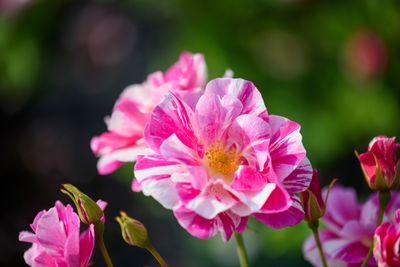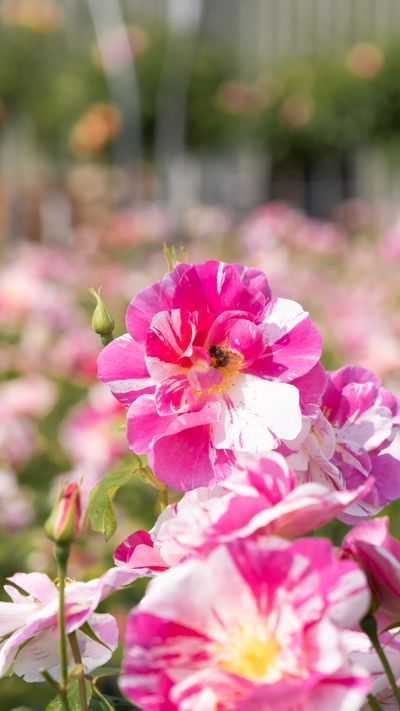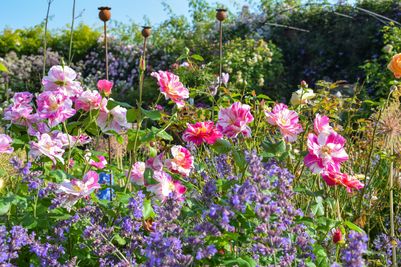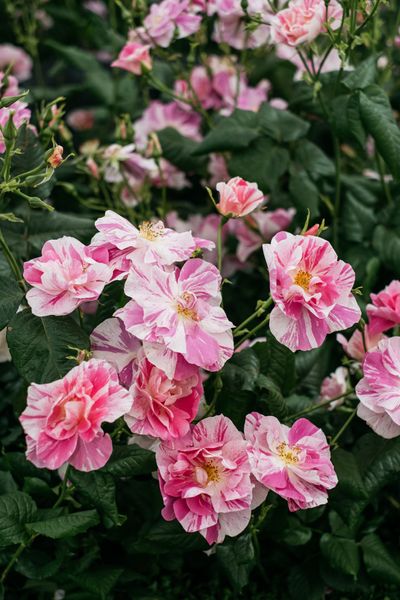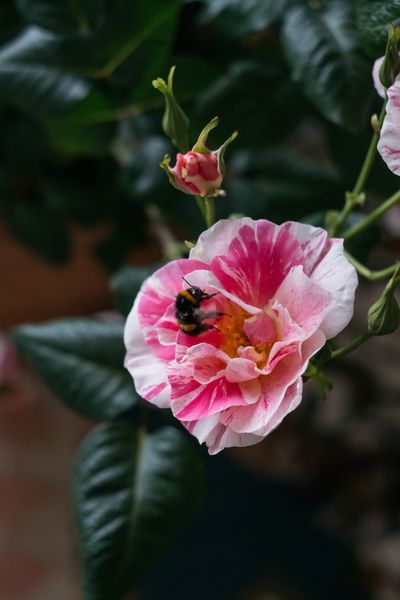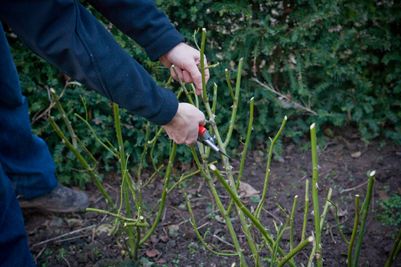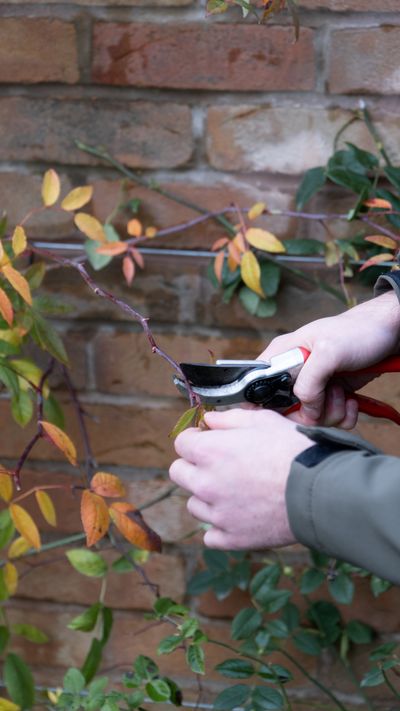A guide to growing ‘The King’s Rose’
Published:
Read Time: 4 mins
After 12 years of dedication and careful breeding, David Austin Roses has introduced ‘The King’s Rose’, a truly special addition to the collection named after His Majesty King Charles III in partnership with The King’s Foundation.
With its distinctive striped fuchsia and white petals, ‘The King’s Rose’ is a striking addition to any garden, blending bold character with the timeless charm of old Gallica roses. Lightly scented with notes of fresh apple, rosewater and soft musk, this repeat-flowering rose is not only beautiful but also easy to grow and care for. Whether planting it in a mixed border, a rose garden or even a lightly shaded spot, senior rose consultant Liam Beddall shares his top tips on how to help it thrive.
Choosing the perfect location
“Like most roses, ‘The King’s Rose’ loves the sun, ideally in a spot with at least four hours of direct sunlight each day. However, unlike some roses, it’s also happy in partial shade, making it a great option for gardens where full sun is limited. It grows to around four feet tall and three feet wide, so ensure there is plenty of space for the roots to spread. Once established, it forms an elegant vase-shaped shrub that fits beautifully into mixed borders, rose beds, or as a statement plant on its own.”
Planting in beds and borders
“This variety thrives best in rich, well-drained soil. If planting in heavy clay or very sandy soil, mix in some well-rotted manure to improve structure. When planting, dig a hole large enough to allow the roots to spread comfortably, placing the graft union (the swollen part at the base of the stems) about two inches below soil level. Water well and sprinkle Mycorrhizal Fungi onto the roots to promote strong growth, before applying a generous mulch to help lock in moisture and keep weeds at bay.”
Planting in pots
“If you’re short on garden space or want to create a showstopping display on a patio, 'The King's Rose’ is also very happy in pots. Choose a container at least 45cm x 45cm (roughly 60 litres) to give the roots plenty of room to spread. A mix of John Innes No. 3 and good-quality multipurpose compost works best, providing a balance of nutrients and good drainage. Add a layer of drainage material (such as gravel or broken crocks) at the base of the pot to prevent waterlogging, and plant just like you would in beds or borders.”
Watering and feeding
“Roses are quite thirsty plants and require consistent watering, especially in their first year while the roots are establishing. A deep soak once or twice a week is far more effective than light daily watering, as it encourages the roots to grow deeper into the soil. Always water at the base of the plant rather than over the foliage to reduce the risk of disease. Potted roses, in particular, need regular watering – check them frequently during dry spells, as the compost will dry out much faster.
“To keep ‘The King’s Rose’ flowering at its best, feed it with a specialist fertiliser in early spring as new growth emerges. A second feed after the first flush of flowers will encourage more blooms, and a final light feed in late summer will strengthen the plant for the following year. A layer of well-rotted manure or compost applied in spring will also help enrich the soil and improve moisture retention.”
Pruning and deadheading
“As with all roses, pruning and deadheading is essential to keeping ‘The King’s Rose’ healthy, well-shaped and flowering at its best year after year. Deadheading can be done throughout the season by simply pinching off any spent blooms between your finger and thumb. This will encourage repeat flowering throughout the season.
“Pruning is best done in late winter or early spring, while the rose is still dormant, so it’s helpful to keep this in mind for later in the year. For newly planted roses that have completed their first flowering season, only a light prune is needed. Trim back the flowering shoots, leaving around 12 to 18 inches of growth from the base. This helps shape the plant while allowing it to continue establishing strong roots.
“There’s no need to worry too much about making precise cuts at an angle – roses are forgiving and quickly put on fresh growth, rewarding you with a season of vigorous blooms.”
A beautiful and wildlife-friendly choice
“With its striking colour and open-centred flowers, ‘The King’s Rose’ is particularly attractive to bees and other pollinators. It has relatively low thorn count that also makes it easier to handle and ideal for cutting if you’d like to bring some of its stunning blooms indoors.”
For more information about David Austin Roses and to purchase ‘The King’s Rose’, visit www.davidaustinroses.co.uk.
Ends
Editors notes
Founded by David C.H. Austin over 60 years ago, David Austin Roses is celebrated globally for its English Roses, renowned for their exceptional fragrance, charm, and versatility. The nursery remains at the forefront of rose breeding, continually striving to innovate while preserving the timeless qualities that define the English Rose. For more information, visit www.davidaustinroses.co.uk.


